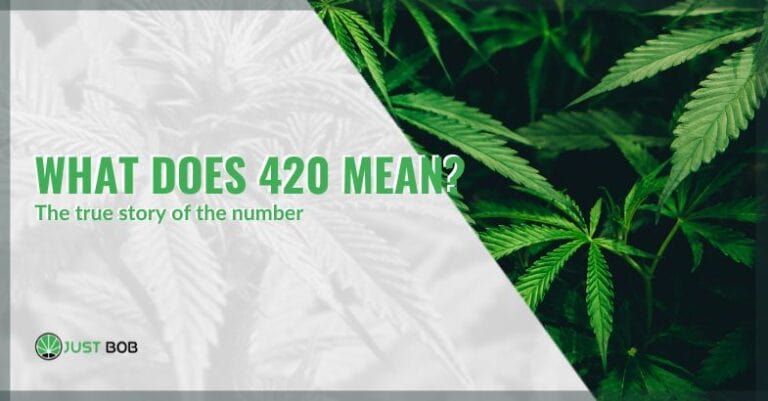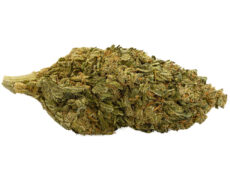Modified on: 01/09/2024
THE TRUE STORY OF THE NUMBER THAT SYMBOLISES THE CANNABIS WORLD: LET’S DISCOVER 420
In a world where numbers and dates increasingly take on cultural, social and historical meanings, the number 420 now stands out as a beacon for the cannabis enthusiast community. The immediate question is, how did a simple number become so iconic?
In this article, we explore the origins of 420, its evolution over time, and how it became the global symbol for marijuana culture.
-
 SMALL & BIG
SMALL & BIGBUBBLEGUM
Indoor | CBD – CBDA < 22%
Starting from:EASTER SALE -10%
1,25CHF1,10CHF/gGrams3 5 10 20 50 100 -


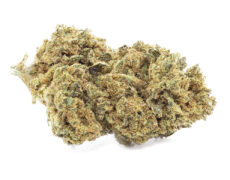
DO SI DOS
Starting from: 2,00CHF/gIndoor | CBD – CBDA < 19%
Grams3 5 10 20 50 100 -


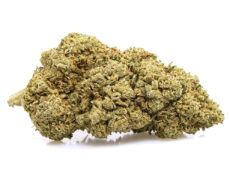
ROYAL GG#4
Starting from: 2,30CHF/gIndoor | CBD – CBDA < 40%
Grams3 5 10 20 50 100 -


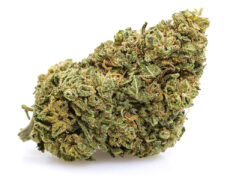
GORILLA GLUE
Starting from: 2,90CHF/gIndoor | CBD – CBDA < 20%
Grams3 5 10 20 50 100
The origins of 420: a story between myth and reality
What does this number indicate? 420 may be the number of people injured during a pro-marijuana demonstration? Is it the birth date of the discoverer of cannabis or Bob Marley’s birthday? In short, where does this number originate? Let’s discover this myth together.
420, but also 4:20 or even 4/20 is a term we know refers to the world of marijuana and cannabis use. This number traces its origins back to the 1970s when a group of students from San Rafael High School began to meet at that time at 4:20, every day or so, to smoke weed together. The very first meeting took place, says 420 lore, in 1971 under the statue of Louis Pasteur in the school grounds.
This group of friends called themselves ‘The Waldos’, referring in their own words to the fact that they used to meet near ‘the wall’ to smoke in company. A real code name, to maintain anonymity with respect to that unconventional and forbidden meeting. So it was that Dave, Steve and Mark cryptically became Waldo Dave, Waldo Steve and Waldo Mark.
Those three guys, the Waldos, would never have thought that their daily rendezvous, to smoke weed together, could influence and be central to marijuana culture, but not enough, something unexpected happened.
Read also: What is cannabigerol, and what role does it play in cannabis?
The Mysterious Marijuana Field
One day news reached the ears of the three boys that aroused their deep interest. The Waldos had indeed heard of an abandoned marijuana plantation, maintained by a Coast Guard officer no less, on land near the Point Reyes service station.
Nothing could have been more fascinating and curious for the three young men who took to smoking every day, not only meeting at 4:20 under the Pasteur statue, but also planning a real plan to find the lost plantation.
The plan for the discovery of the marijuana field was called by the boys unsurprisingly “4:20 Louis “ taking the name of the scientist whose statue supervised the Waldos’ “strategic choices” of discovery. They decided to shorten the name of the project to 4.20 and this became for them, but not only for years, the code name for talking about marijuana in the school corridors, in the presence of parents and teachers without ever being discovered.
The boys made several attempts to find this crop of cannabis, but all failed miserably: they could not locate their Garden of Eden. What remained of their adventures was, in addition to a found friendship, the magic number associated with cannabis: the 420.


420 becomes a symbol of cannabis culture
From these “humble” beginnings, the term 420 took hold in popular culture. Steve Hanger of the High Times (a magazine whose primary objective was the legalisation of cannabis and its derivatives) is identified as being most responsible for the consecration of the history and adventures of The Waldos.
In fact, he wrote the article “Stoner smart or stoner stupid “ and from then on, thanks to him, the Waldos reached such a level of popularity that they became a veritable cult, crushing all other stories concerning the origin of 420 as a symbolic issue that we will see later.
It seems that the Waldos even have the evidence to prove how the 420 originated with them and their dreams of smoking boys in the gardens of San Rafael High School in the shadow of the Pasteur statue. All this well before the rock band, the Graterful dead, increased its popularity.
Held safely in the caveau of a bank, articles, clippings and memorabilia belonging to the Waldos group were shown to some people from the Huffington Post. One of these is particularly interesting and comes directly from the San Rafael school newspaper.
In fact, one article reports a particular statement that took place during the graduation ceremony. One of the students wanted to convey a single curious, specific and critical message to his classmates: ” 4 – 20″. Now we know what he wanted to communicate!
That of the Waldos is certainly a beautiful story for which, the young students never became famous, They remained a group of cannabis-loving kids who influenced with their adventures the birth of an alternative culture that arrived with the number 420 on a global scale.
From time to time, they appeared in documentaries and were interviewed by magazines interested in the origin of the term 420, but never sought to monetise their youthful stories.
Read also: Cannabis decarboxylation: what it is, how it works and what the benefits are
Grateful Dead and 420
The link between the Grateful Dead, (a band formed in the mid-1960s in the United States) and 420 exists and many identify the band’s activities as being heavily responsible for the spread and consecration of the symbol in the world of marijuana worldwide.
Although the band members are not directly responsible for the creation of the term, their vast network of fans and the culture that surrounded them nonetheless played an important role in the diffusion of 420 as the international cannabis symbol.
The connection between the Grateful Dead and 420 dates back to the 1970s, when the term was as they put it coined by the Waldos of San Rafael High School in California. The boys had backstage and rehearsal access to the Grateful Dead through personal connections.
The band’s bass player Phil Lesh was a close friend of Waldo’s older brother Dave. This allowed the term ‘420’ to infiltrate the community of Deadheads (Grateful Dead fans) and spread through their rallies and concerts around the country.
420 spread and curiosity
Cannabis smoking communities have always, given the widespread illegality of marijuana consumption, used secret codes and methods to indicate their love of weed, the most popular of which has been 420.
This number was born in a shadowy area, but thanks to its spread over the last 30 years, and the ever-increasing attestations of popularity, we are witnessing the emergence of the number 420, 4.20, 4/20 in almost everyday life. The shadows are dissolving and there are testimonies.
A prime example is found in Quentin Tarantino’s iconic film, Pulp Fiction. Have you ever realised that all the clocks go off at 4:20? Do you think it’s an accident?
Again, “State Bill 420” is the name of a Californian bylaw regulating the use of marijuana for medicinal purposes.
Did you know that the mile mile marker number 420 on the highway to Denver was stolen so many times that the authorities gave up and decided to replace it on a totally exceptional, thief-proof (maybe) basis with the number 419.99?
In short, the spread of 420 is extraordinary and the Waldos never thought that the time to start smoking weed would shape the culture around cannabis so much.
We at Just bob are always interested in such peculiarities.
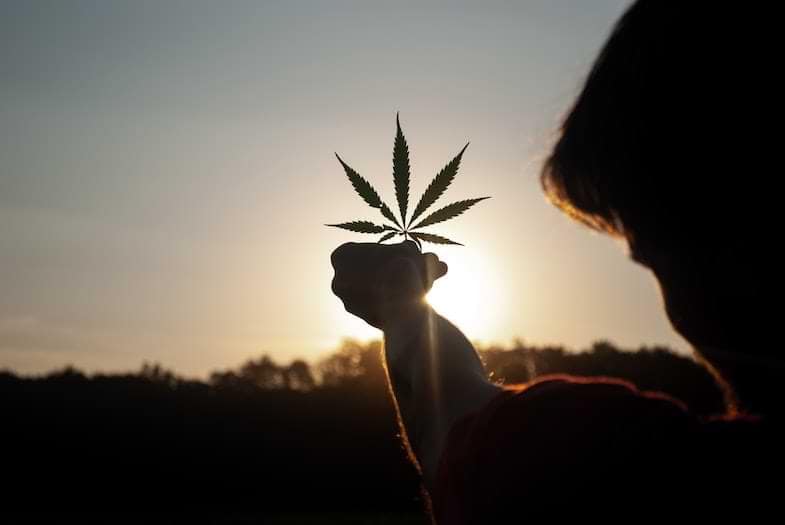

20 April: a global celebration for legalisation
Every year on 20 April (4/20 in the US date format), millions of people around the world gather to celebrate the culture of cannabis. Events, rallies, but also protests for the legalisation of marijuana are organised. During this day, collective weed use and consumption sessions are also planned (where and as possible of course).
In short, 20 April is a day dedicated to real celebrations that vary from small informal gatherings to large public events, and which aim to demonstrate the growing desire for the normalisation of cannabis in society.
The 4/20 has become a true rallying point for those pushing for legalisation and the recognition of the rights of cannabis users. In many places, 20 April is an occasion to make the public aware of the benefits of marijuana and the injustices associated with its criminalisation.
The most important demonstrations in Europe, which are organised on 20 April each year, are seen in Amsterdam, London, Berlin and Barcelona.
As far as North America is concerned, the most important demonstrations were held at the Hippie Hill in San Francisco’s Golden Gate Park near the Haight-Ashbury neighbourhood or on the campus of the University of Colorado just to name two locations where the political debate became heated.
There is still much debate, every year and not only on 20 April, about the consumption and use of weed, but also of hashish. While waiting for its legalisation, many have started testing CBD oil as a recognised ‘alternative’ to relax by following the rules.
Myths to dispel
We have seen how 420 has come to represent the marijuana smoke in the world and its origin can be traced back to the appointment time that young waldos used to give themselves for smoking weed. Here, then, we can dispel some myths related to the origin of this issue.
The first one we mention is that of the California Penal Code. Some have mistakenly believed that the number 420 was derived from the laws that punish the use or distribution of cannabis in this state. However, in reality, the 420 code in California applies to regulations on obstruction and access to public spaces.
For some, 420 indicated the number of active chemicals present in marijuana, but it is actually 315. Another interesting myth to debunk concerns an alleged radio code used by the New York or Los Angeles police, which does not actually include 420. Such a code exists in San Francisco, but is associated with reports of youth riots.
Still the 420 (20 April) is not the birthday of Bob Marley (born 4 April) who passed away on 11 May 1981.
The singer Bob Dylan was also named in the myths to be debunked. In his track ‘Rainy Day Woman 12 & 35‘, he makes no reference to 420. No matter how one attempts to add, multiply or manipulate the numbers 12 and 35, one does not arrive at the famous emblematic figure. Indeed, Dylan says in the song “everybody must get stoned “, but this is no more than a coincidence.
There, now at the end of the article we also know what major beliefs have been traced back to 420 and how these are nonsensical myths. They forgot 20 April can’t even be considered the date of the beginning of cannabis sowing, which as you can easily infer, varies from latitude to latitude!
For these and other curiosities stay tuned to Justbob!
Conclusions
From a simple code among friends to an international symbol of cannabis culture, 420 has travelled a long and varied road. Today, it represents not only a moment of celebration, but also a symbol of the ongoing fight for the legalisation and acceptance of both recreational and medical use of marijuana.
As the world evolves in its understanding and regulation of cannabis, the 420 remains a pillar of the community, reminding us of the roots from which we started and where we are going.
We can add in conclusion that the popularity of the 420 number exploded in the late 1990s with the advent of the internet, which dramatically reduced the time it took to communicate and transmit information. All augmented by the increasing and gradual depenalisation of marijuana, which helped create a new myth.
Takeaways
- The term “420” originated from a group of high school students, known as “The Waldos,” who used to meet at 4:20 PM to smoke marijuana. This casual meet-up time evolved into a cultural phenomenon within the cannabis community.
- Despite various myths surrounding its origin, including connections to police codes or Bob Marley’s birthday, the true genesis of “420” lies in the simple act of friends meeting to smoke weed.
- While not directly responsible for the term’s creation, the band Grateful Dead and their widespread influence among fans, known as Deadheads, helped popularize and spread the term internationally.
- Over the years, “420” has become a universal symbol for marijuana culture, transcending borders and language barriers. It is celebrated annually on April 20th, with events and gatherings advocating for cannabis legalization and awareness.
- From its humble beginnings to its current status as a global symbol, “420” continues to represent not only a shared moment of celebration but also a rallying point for the ongoing fight for the normalization and legalization of cannabis worldwide.
FAQ
What is the origin of the number 420?
The term ‘420’ originated from a group of high school students known as ‘The Waldos,’ who used to meet at 4:20 PM to smoke marijuana. This casual meet-up time evolved into a cultural phenomenon within the cannabis community.
Why is 420 significant in cannabis culture?
420 is significant in cannabis culture due to its association with the time of day when ‘The Waldos’ would meet to smoke marijuana, as well as its subsequent adoption by the broader cannabis community as a symbol of camaraderie and celebration.
Are there any myths surrounding the origin of 420?
Yes, there are several myths surrounding the origin of 420, such as it being the number of chemicals in marijuana or the penal code for cannabis-related offenses in California. However, the true origin lies in the meet-up time of ‘The Waldos.’


